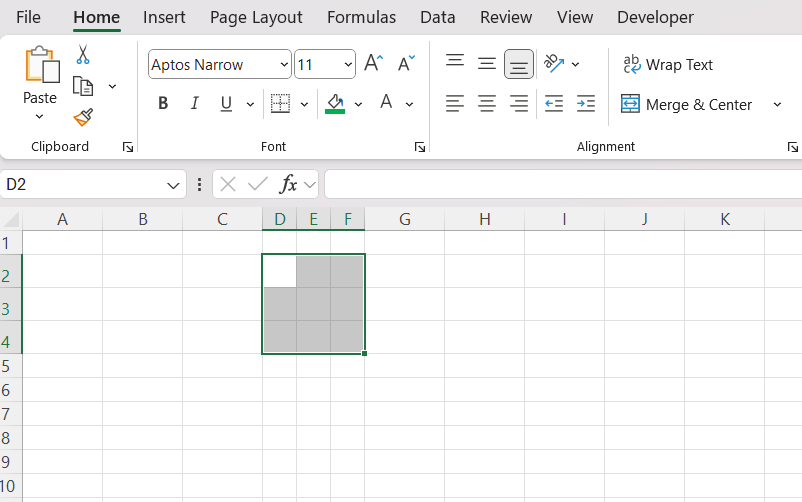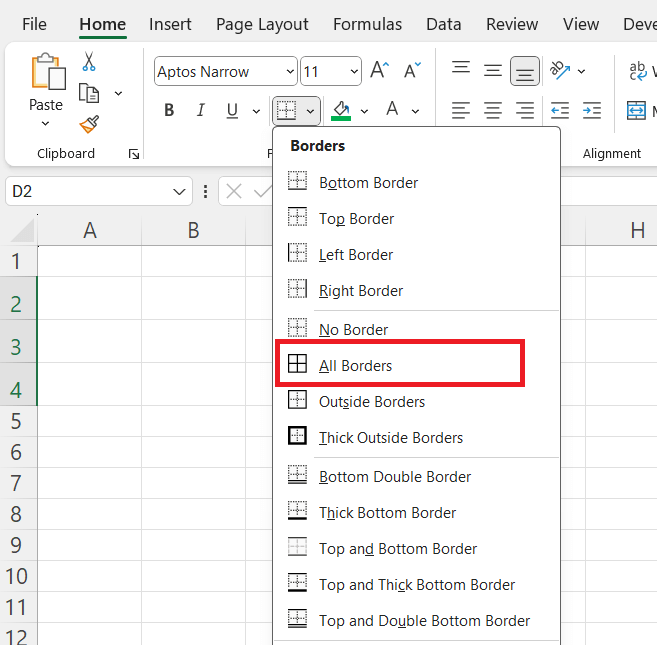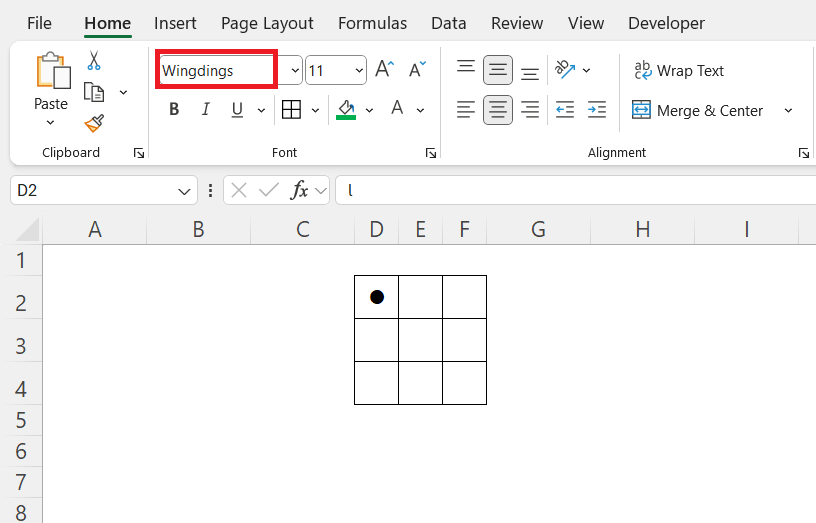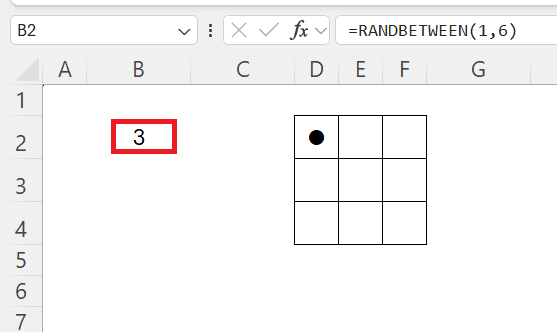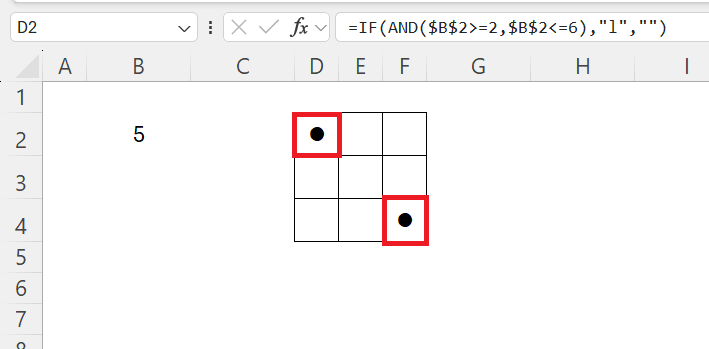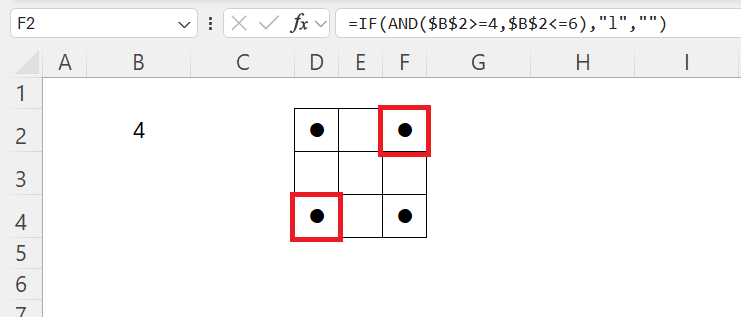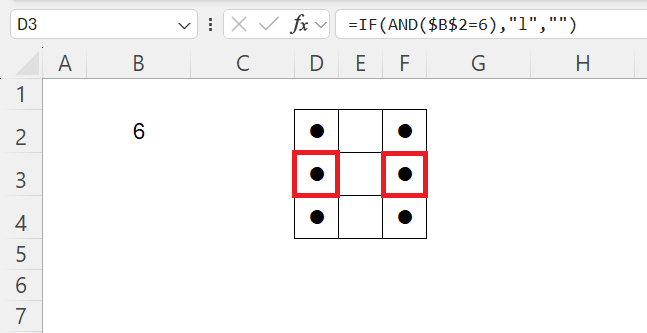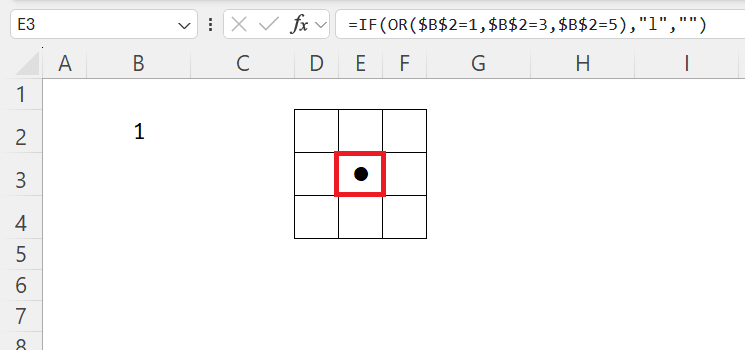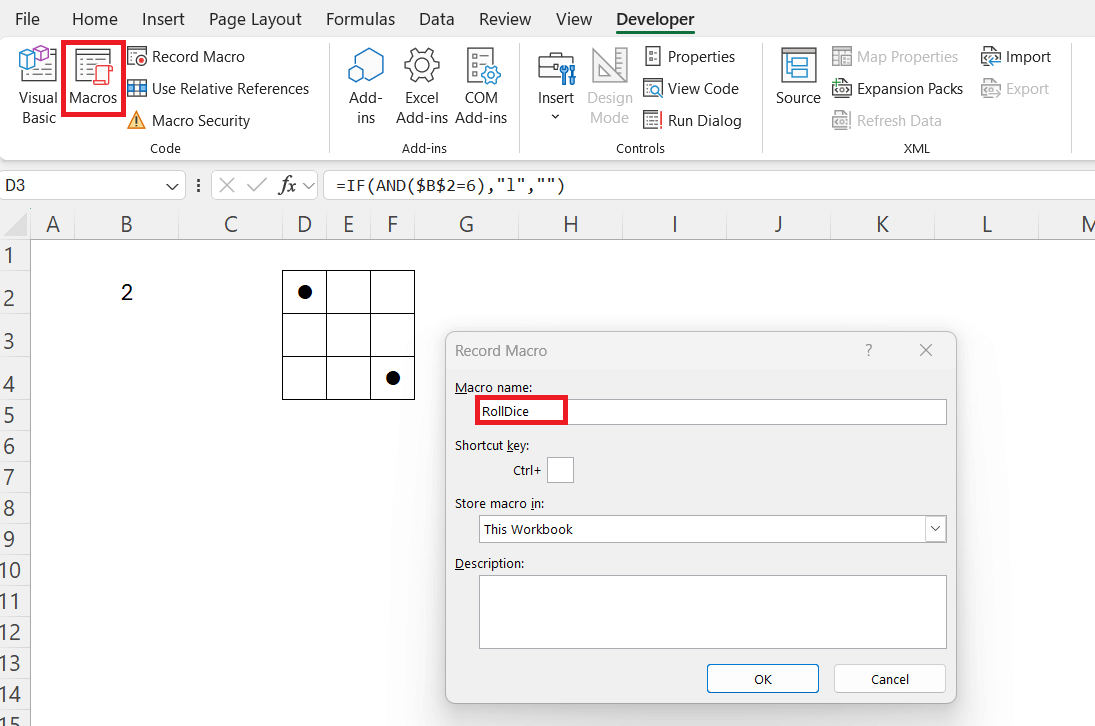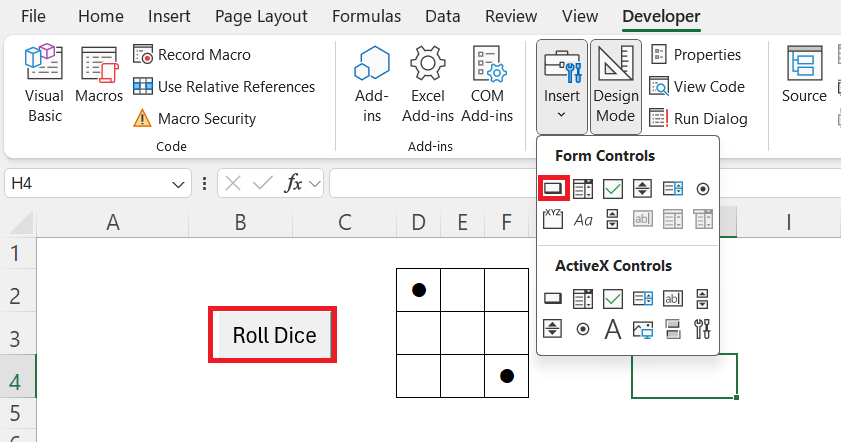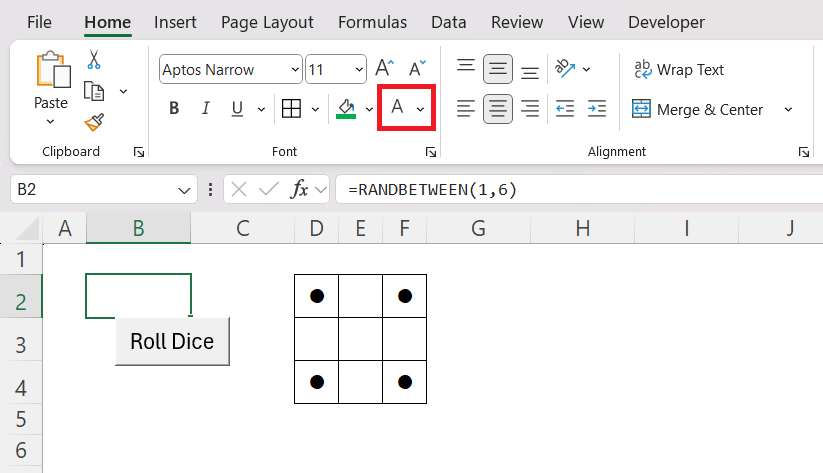Rolling a dice in Excel can be a fun and practical way to simulate randomness for games, decision-making, or probability experiments. In this guide, I’ll show you how to roll the dice roll using simple formulas and Excel’s built-in functions.
Key Takeaways:
- Rolling dice in Excel uses the RANDBETWEEN function to generate random numbers between 1 and 6.
- Formatting cells with Wingdings font and conditional formulas helps visually represent dice spots.
- Interactive buttons and macros can enhance the experience by allowing controlled dice rolls.
- Excel dice simulations have practical applications in education, gaming, and decision-making.
- Hiding formulas maintains the illusion of randomness and keeps the spreadsheet clean.
Table of Contents
Excel Dice Rolling Simplified: Introduction
The Allure of Simulating Dice in Excel
Delving into the digital simulation of dice in Excel taps into a fascination with chance and unpredictability. When I simulate dice throws in Excel, not only do I bring an element of surprise to the sheet, but it also offers an opportunity to mix the strategic rigor of board games with the analytical prowess of Excel.
This coupling of leisure and logic provides a unique, engaging atmosphere for users of all ages and professions.
Why Learn to Roll the Dice?
Learning to roll digital dice in Excel expands beyond just a hobby; it’s a skill that sharpens logical thinking and a familiarity with Excel’s functionalities. It’s particularly handy for game enthusiasts who relish the prospect of integrating dice-based games into a virtual platform, educators seeking interactive teaching methods, or professionals needing randomization tools for simulations.
The process encourages a deeper understanding of probability and statistics, empowering users to create customized tools and applications within Excel.
How to Roll the Dice in Excel
Step 1 – Laying out the Spreadsheet
To begin, I focus on formatting the cells properly to visually represent the dice. I typically select a range such as D2:F4 for this purpose and change the row height to 20 and column width to 3 to ensure the cells resemble the sides of dice.
With precision, I add Outside Borders through the Border list arrow on the Home tab for that defined range.
Choose Wingdings font to make a lowercase ‘l’ appear as a spot.
All cells must have a font size of 12, with both horizontal and vertical alignment set to Center and Middle, respectively, to ensure proper display.
Step 2 – Add the RANDBETWEEN Function
This is when the digital dice come alive. To mimic the randomness of an actual dice roll, I incorporate the RANDBETWEEN function. In cell B2, I type =RANDBETWEEN(1,6), and this serves as the heart of our simulation, generating a random number between 1 and 6, akin to what a physical die would offer.
This simple, yet powerful function is the digital equivalent of shaking the dice in hand and watching with bated breath as they settle on the table – all in the comfort of an Excel worksheet.
Step 3 – Display the Correct Number of Spots
The final touch to make the digital dice recognizable rests in displaying the correct number of spots. I delve into formulas such as =IF(AND(B2>=2,B2<=6),”l”,””) typed into the top left (D2) and bottom right (F4) corner cells, which only show a dot if the dice roll is between 2 and 6.
For the top-right and bottom-left spots, I use =IF(AND(A2>=4,A2<=6),”l”,””) to ensure they appear on rolls of 4, 5, or 6.
The middle spots on the sides (i.e D3 and F3) are set with =IF(A2=6,”l”,””), exclusively lighting up for a roll of 6.
Lastly, the central spot is governed by =IF(OR(A2=1,A2=3,A2=5),”l”,””), showing on odd-numbered rolls.
By employing these clever conditional formulas across the relevant cells, the simulated dice now reflect the numbers rolled in A2. The beauty of this system lies in its simplicity and reliability, echoing the distinct pattern of dots we’re all familiar with from physical dice.
Enhancing Your Excel Dice Experience
Building Interactive Buttons
For a more user-friendly and controlled experience, I construct interactive buttons in Excel that serve as virtual “dice shakers.” First, I need to change Automatic Calculation to Manual in Excel.
Then navigate to the Developer tab and instruct Excel to record a new macro named “RollDice.”
It’s here that I select the Calculate sheet button, which in turn prompts our RANDBETWEEN functions to re-roll the virtual dice.
After stopping the macro recording, it’s just a matter of inserting a Button (Form Control) onto the worksheet, which I then link to the “RollDice” macro.
The ingenuity of this action—pressing a button to simulate roll the dice—transforms the spreadsheet into a dynamic gaming environment, providing both the appeal of physical interaction and the convenience of digital gaming.
Practical Uses for Excel Dice Simulations
Educational Applications
From an educational standpoint, the Excel dice simulation can be an invaluable tool. It serves as a hands-on method for teaching probability, demonstrating that while each dice roll is random, the distribution of outcomes follows a predictable pattern over a large number of rolls. Such visual aids can transform abstract statistical concepts into concrete learning experiences.
Additionally, I’ve seen these simulations being utilized in classroom games to decide the order of presentations or to randomly assign topics to students. It encourages inclusivity and fairness, as the random nature of the dice eliminates any bias in the selection process.
Gaming and Decision-Making Tools
Excel dice simulations are also perfect for gaming enthusiasts looking to bring board games into the digital realm. The unbiased randomness of virtual dice is perfect for games like Risk, where dice odds play an integral role in strategy, or for Settlers of Catan, where resource allocation depends on dice outcomes. These simulations level the playing field, ensuring that the digital environment replicates the chance element found in traditional gaming.
Furthermore, decision-making tools often rely on randomness to select from multiple options. Whether it’s determining who makes the next move in a game or which potential scenario to simulate in a business model, Excel dice can introduce the element of chance required for unbiased selections.
Tips and Tricks for Smooth Rolling
Hiding the Formulas to Keep the Magic
To preserve the mystery and keep the focus on the fun of rolling dice, I hide the machinery behind the magic—the formulas. It’s a subtle but neat trick where I change the font color of the cells containing the RANDBETWEEN functions to match the background. This renders the formulas invisible to users, maintaining a clean and uncluttered appearance.
It’s akin to a magician never revealing his secrets, heightening the illusion and enhancing the overall experience.
FAQ: Mastering Excel Dice Rolls
How to roll the dice in Excel?
To create a dice roll in Excel, use the RANDBETWEEN function. Enter =RANDBETWEEN(1,6) into a cell to simulate the roll of a single die, which generates a random integer between 1 and 6. Copy the formula to another cell if you need to simulate rolling two dice.
How to create a rolling formula in Excel?
A rolling formula in Excel can be created using the RANDBETWEEN function, like =RANDBETWEEN(a,b)+c. Replace “a” with the minimum roll value, “b” with the maximum, and “c” with any added constant, if needed, to simulate rolling dice or generating other ranges of numbers.
How do I ensure fairness in Excel dice rolls?
To ensure fairness in Excel dice rolls, rely on the RANDBETWEEN function for its inherent randomness, and avoid using any fixed seed numbers. Additionally, recalculating the spreadsheet with F9 makes each roll independent and fair.
Can I simulate different types of dice using Excel?
Yes, you can simulate different types of dice using Excel by adjusting the RANDBETWEEN function parameters. For example, for a 20-sided die, use =RANDBETWEEN(1,20). You can customize the function for any type of die needed for your game or simulation.
John Michaloudis is a former accountant and finance analyst at General Electric, a Microsoft MVP since 2020, an Amazon #1 bestselling author of 4 Microsoft Excel books and teacher of Microsoft Excel & Office over at his flagship MyExcelOnline Academy Online Course.

